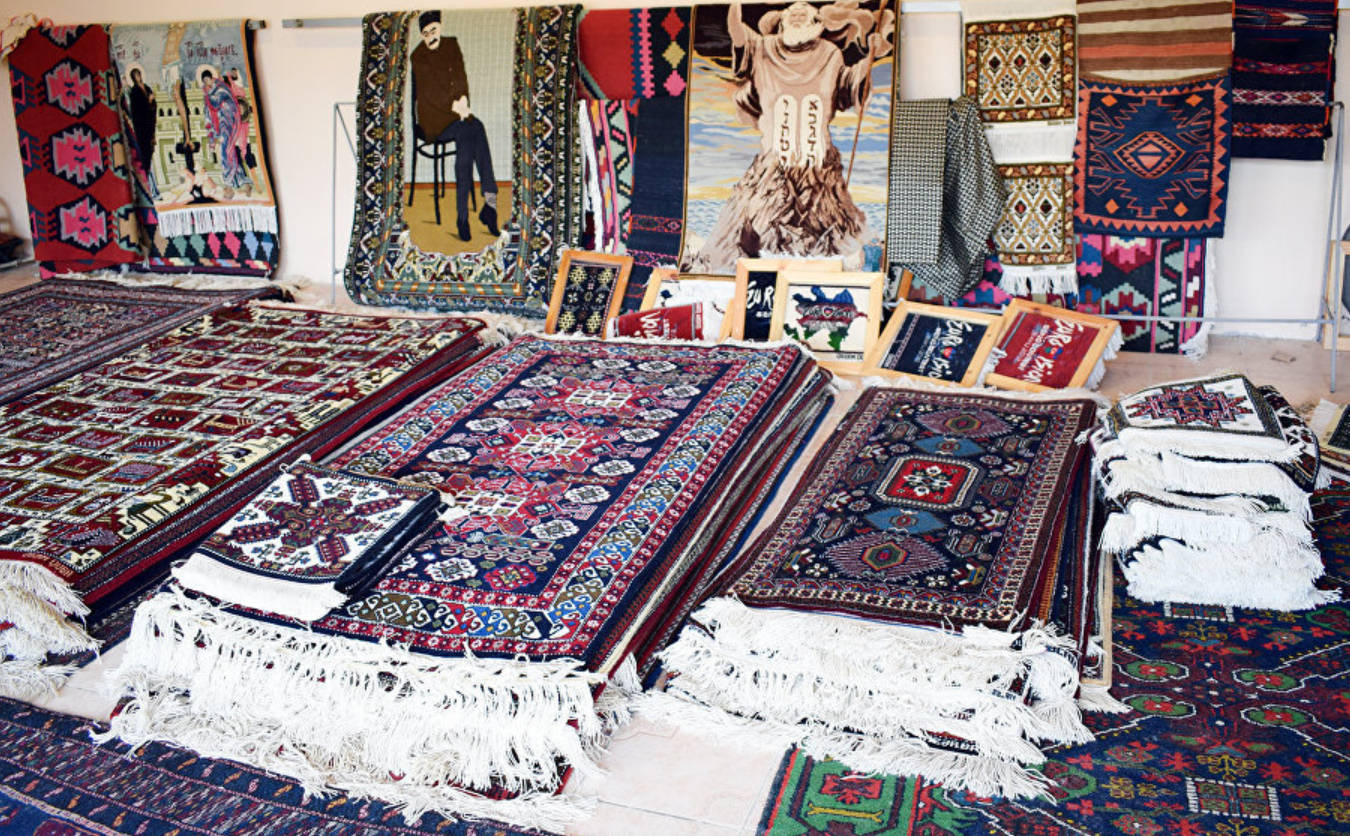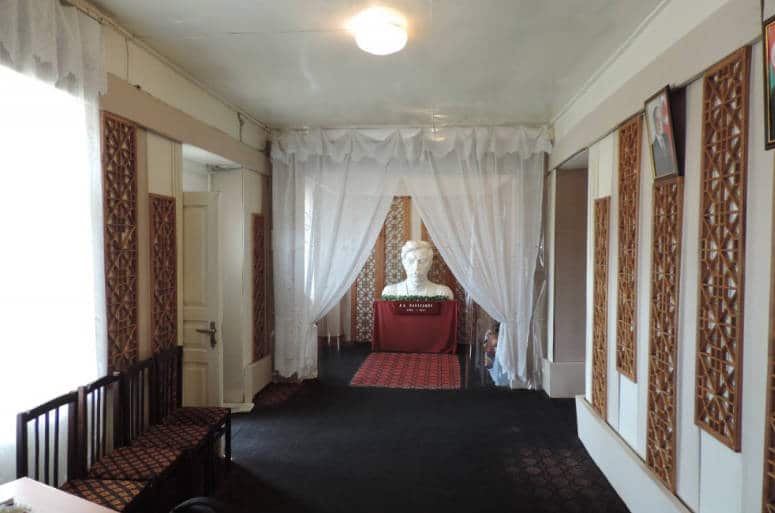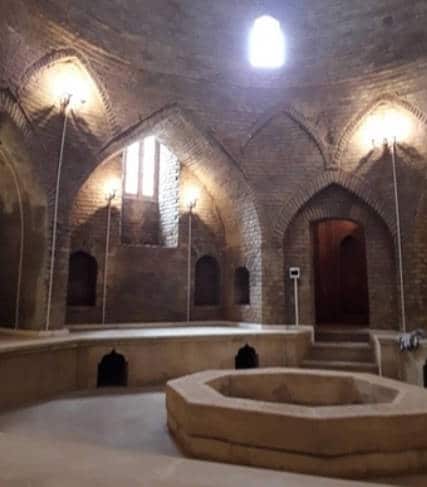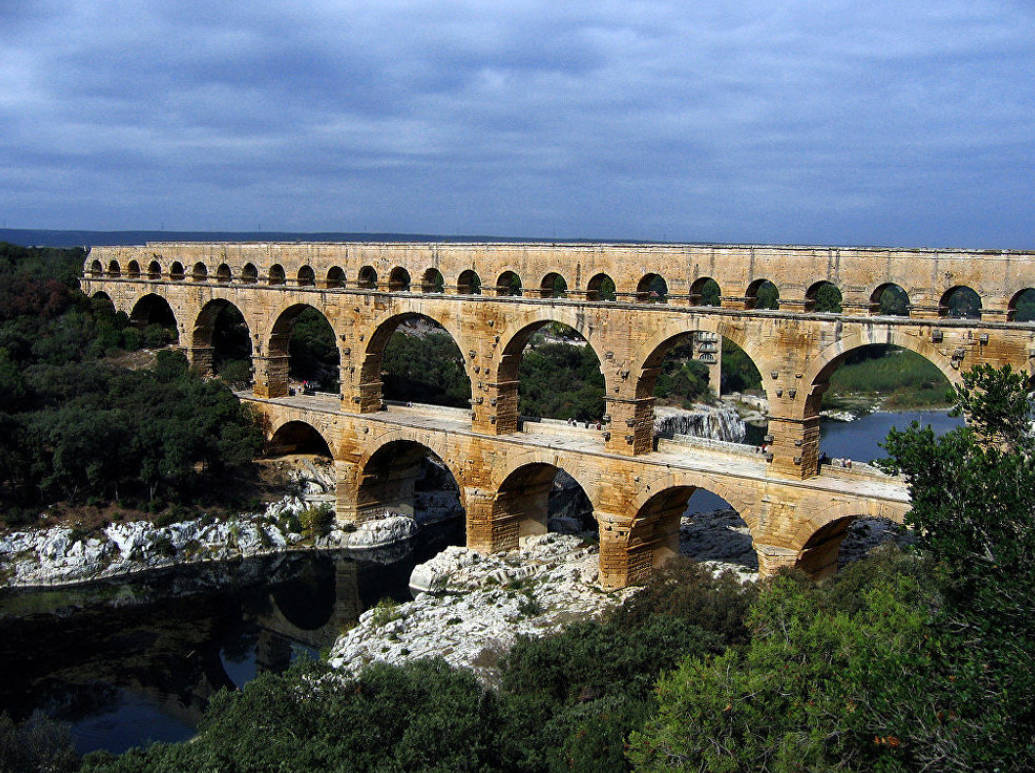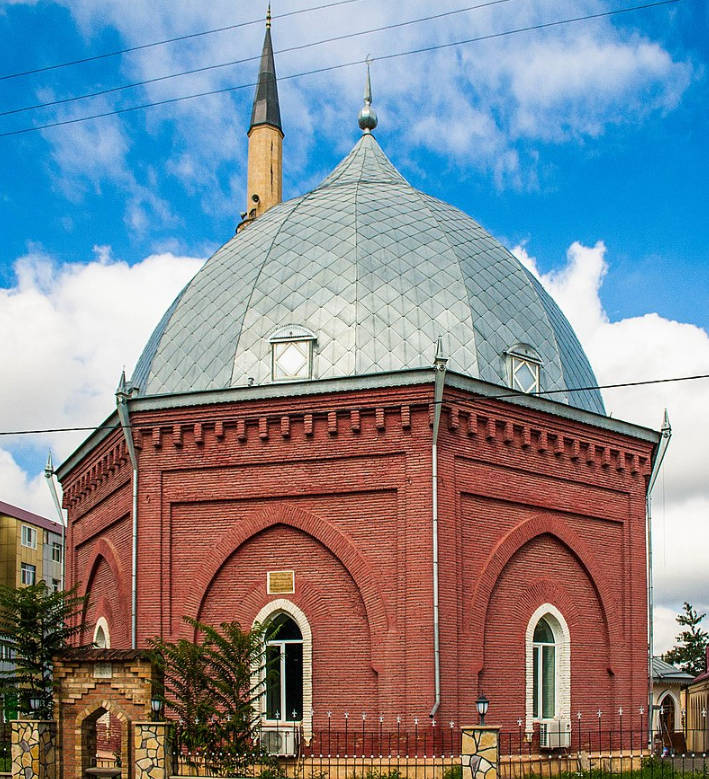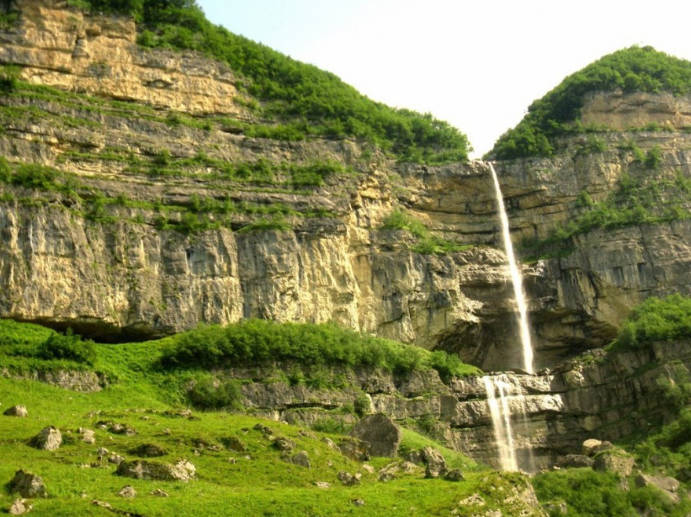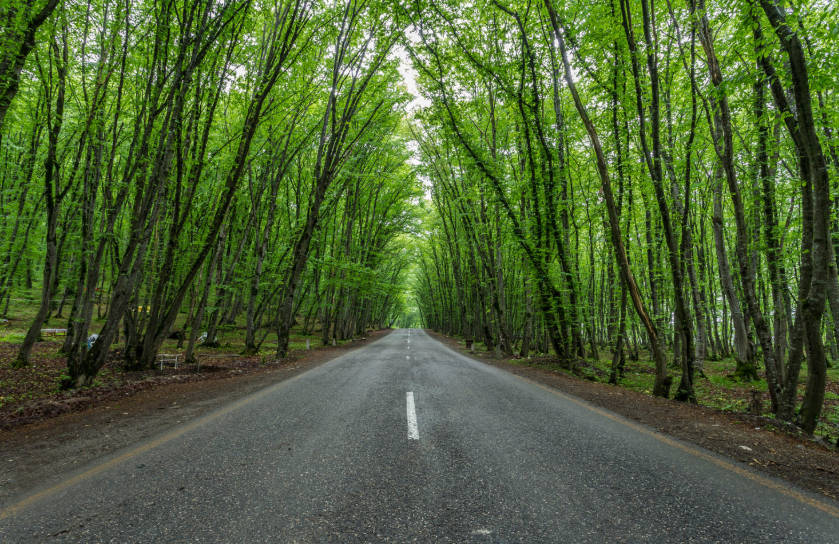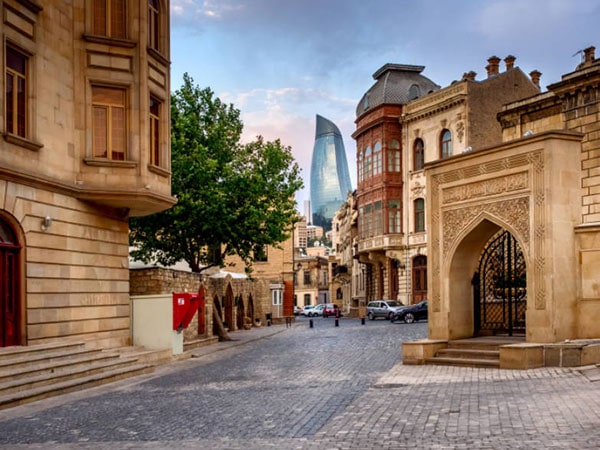One of the favorite tours for tourists is Guba tour. After driving only two hours to the north of the country, you find yourself in a historical city founded in the IV century, famous for ancient mosques, famous for its unique carpets. Only in the Guba district, you can meet original villages – a kind of ethnographic open-air museum, in each of which the peoples living in them speak their unique language.
Guba is also called the land of apples – orchards stretching for kilometers with the most delicious and juicy fruits made it famous far beyond the borders of Azerbaijan.
Guided Azerbaijan offers you ten places to visit during the Guba tour.
Original villages
Representatives of several small peoples live in Guba, and therefore each village here is an ethnographic open-air museum. Local peoples have their own unique language: Haputlin, Kryz, Jack, Hynalyg. In these small villages, only a few houses have been preserved, and the largest of them is the mountain village of Khinalig, which is included in the list of UNESCO World Heritage Sites. Due to its inaccessibility, a peculiar language, unique architectural appearance, and culture, the village attract tourists from all over the world.
Since 2007, Khinalig has been declared an ethnographic reserve. The most unusual here you can see on Guba tour are houses located on the top of the mountain in the form of an amphitheater. They look like eagle nests: built on a slope close to each other, here the roof of one house serves as a yard for another, located above.
Carpet weaving center
While the Guba tour you will feel that Guba region is the largest center of carpet weaving in Azerbaijan. The carpets woven here adorn museums and private galleries in many countries of the world. So, the Golu Chichi carpet, made by Guba craftsmen in 1712, is now on display at the Metropolitan Museum of Art in New York. Guba carpets are characterized by complex geometric patterns and restrained color schemes. You can see the skill of weavers in local workshops that are open to tourists. In professional carpet-making enterprises weave handmade carpets for every taste and size. When dyeing threads from which carpets are woven, only natural dyes are used.
Guba memorial complex of genocide
You will be informed also about history of Guba almost in every corner while Guba tour. In many countries of the world, there are monuments reminiscent of the tragic pages of its history. In Azerbaijan, it is the Memorial complex of the genocide in Guba.
The location of the monument was not chosen by chance. In the spring of 1918, Guba County became one of the epicenters of the bloody drama organized by Armenian military units and resulting in the deaths of tens of thousands of innocent people. All these facts remained history for many years, preserved on the yellow pages of archival documents. Until in April 2007, mass graves of people who died on the tragic March days of 1918 were discovered on the territory of Guba. In 2013, at the place of mass burial, in memory of the victims of the tragedy, the Genocide Memorial Complex was erected. The monument consists of three parts – two structures resembling pointed knives, as well as from the main hall, in the middle of which is a memorial stone. The sharp ends represent a huge pain, tearing apart the heart. And the fact that they come out of the ground suggests that it is impossible to hide the truth.
The house-museum of Abbasgulu aga Bakikhanov
Guba tour will recognize you with the famous people of Azerbaijan.
Abbasgulu agha Bakikhanov (1794-1847) was a military translator, encyclopedic scientist, the prominent diplomat, and officer of the Russian army. He was born in the Absheron village of Amirjan, but as a child moved with his family to live in the village of Amsar of Gubinsky district. In memory of the great Azerbaijani in 1943, the Abbasgulu Agha Bakikhanov Museum of Local History was opened in the city of Guba. It was created in an old house of the 19th century, in which Bakikhanov himself lived at one time. The museum stores about ten thousand different exhibits, and annually it is visited by more than three thousand people. There is another house-museum – in the village of Amsar, where Bakikhanov lived for many years. Here are collected unique exhibits of the 19th century, books of the scientist and much more.
Chukhur Hamam
Chukhur Hamam – the so-called historical bathhouse, built-in Guba in the 18th century. It was built of red brick, crowned with a quadrangular building, a large dome, allowing you to keep the desired temperature and humidity in the room. The bathhouse consists of four rooms, the decoration of the walls of which used colorful national ornaments. Chukhur Hamam is a historical monument, in which restoration work will soon be completed.
Arched bridge
Another state-protected architectural monument is the Arched or Gudialchay Bridge, built in the 19th century. It was erected by order of the Russian Tsar Alexander III in order to strengthen the military presence of Russia in the Caucasus. Fourteen spans of the bridge with a total length of 275 meters and a width of eight meters are assembled from burnt brick. Thanks to its multi-span structure, it withstood powerful mudflows and today is the only bridge of this design in Azerbaijan. The bridge is closed to traffic, only pedestrians can use it. In turn, the bridge offers a romantic view of Guba that you will enjoy during the Guba tour most of all and the surrounding mountain peaks.
Guba mosques
Guba mosques have their own unique architecture, which will undoubtedly attract the attention of a curious tourist on Guba tour. One of them is the Juma Mosque (Friday Mosque), erected in the city center at the beginning of the 19th century. It has the shape of a regular octagon, inside of which there is one large hall, crowned by a huge dome. Another monumental religious structure is the Sakina Khanum Mosque. It was built in the 19th century by the wife of Abbasgulu agha Bakikhanov to perpetuate the memory of the great historian and diplomat. The building of the nine-domed mosque is 27 meters high, built of burnt red brick and looks like a faceted cylinder. On top of it is a large white metal dome crowned with a helmet and trimmed with numerous faces. Locals claim that the mosque was built without the use of cement, and eggs were used as a fastening element.
Red Settlement
The red settlement is called the village of millionaires because it is from here that many rich Jews hail. It was here that Russian businessmen Akif Gilalov, Zarakh Iliev and God Nisanov were born. And although they live abroad, nevertheless, each of them has their own home in Red settlement, millionaires also donate to the local synagogue, participate in social projects. In turn, Red Settlement is the only community of Mountain Jews in the CIS. The local population loves pomposity – huge villas resembling palaces are built in the village, and expensive cars drive around its streets. It is known that Jews appeared on Azerbaijani soil in the 5th century – they were orthodox Jews who professed the teachings of not only the Old Testament but also the Talmud and rabbinical beliefs and speaking the language of the Iranian Juhuro group.
Afurdja waterfall
Guba conquers many with its unique natural landscapes. People come here to see the natural waterfall of Afurdja while Guba tour, carrying its stormy waters from a 75-meter height. The highest waterfall in Azerbaijan is located near the picturesque Tengalta gorge, and you can get to it by a narrow rocky road leading past narrow cliffs. From a 75-meter height, streams of the waterfall from Mount Tengi into a deep semicircular pit, in which the most daring tourists bathe. This natural monument is protected by the state, and local guides boast that at one time the Russian poet Mikhail Lermontov and the Decembrist Bestuzhev-Marlinsky visited here.
Gachrash Forests and Gudalchay Canyons
Gachrash village is one of the most picturesque and lively corners of Guba. The peculiarity of this area is attached to the mysterious forest through which the road to Gachrash passes. It seems that the rays of the sun never penetrate this dense forest. In a magical forest, as in childhood, “trees are so big” that the crowns are not visible. Along the road, there are recreational areas and restaurants where you can sample the local cuisine. If you go further, you find yourself in the canyons of Gudalchay: steep climbs and descents of the road passing along the steep walls of the gorge. Even in the most unbearable summer heat, it is always cool here – the mountain streams of the bubbling Gudalchay River descend with a roar and amaze with their majesty.

